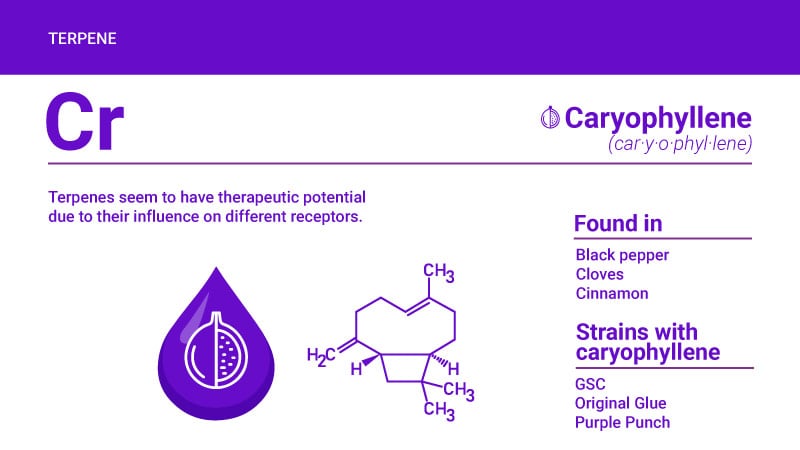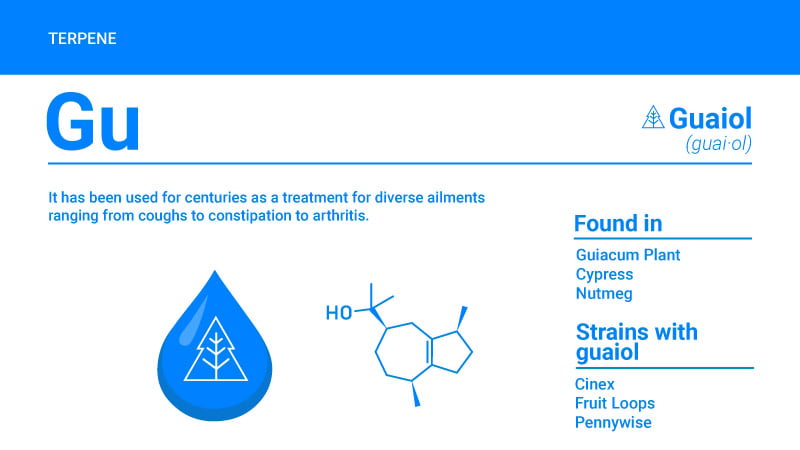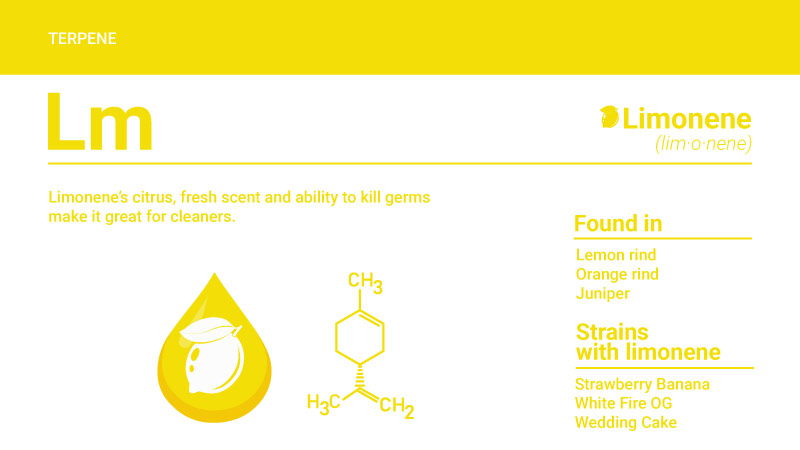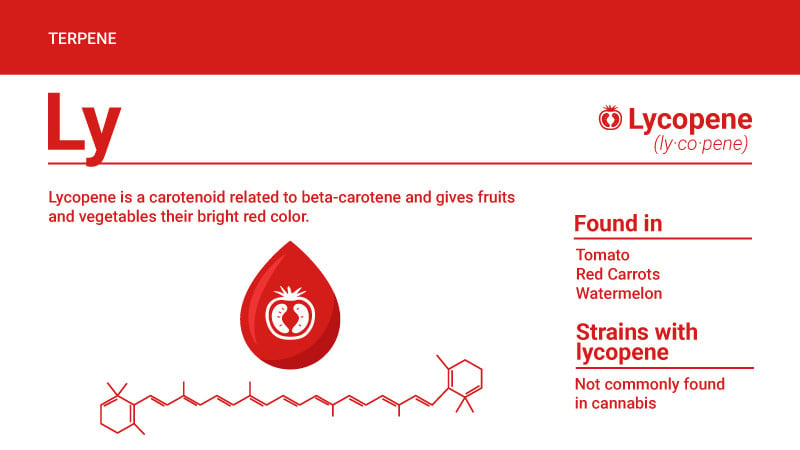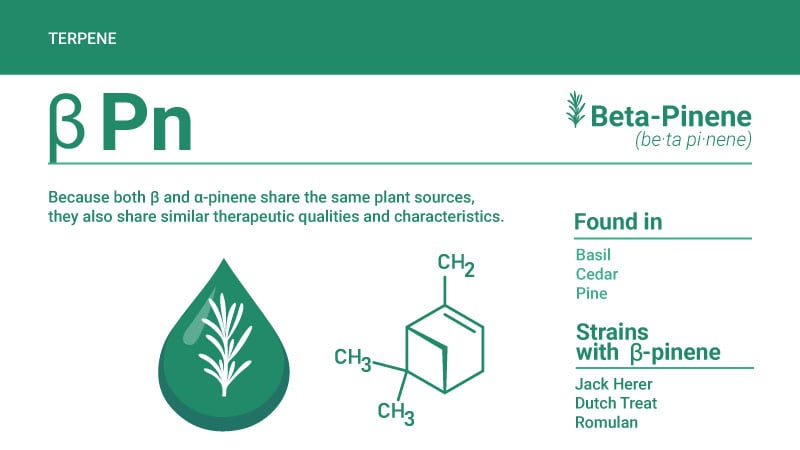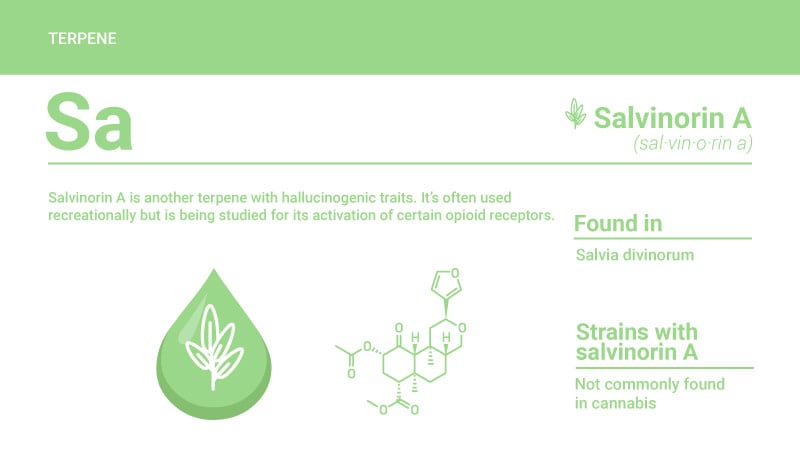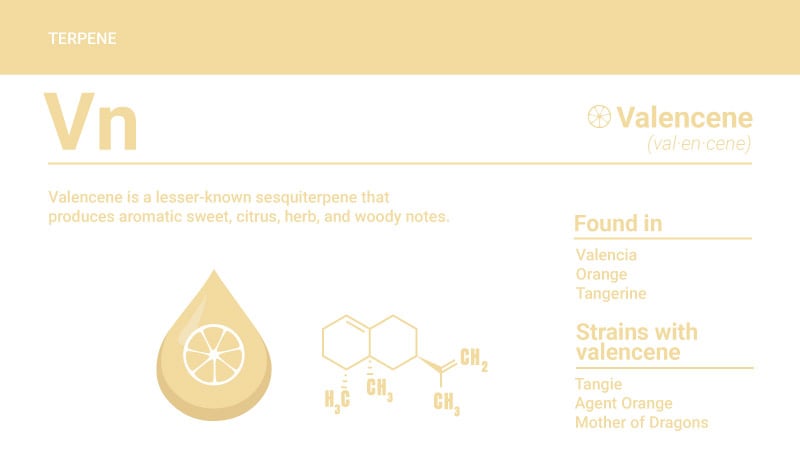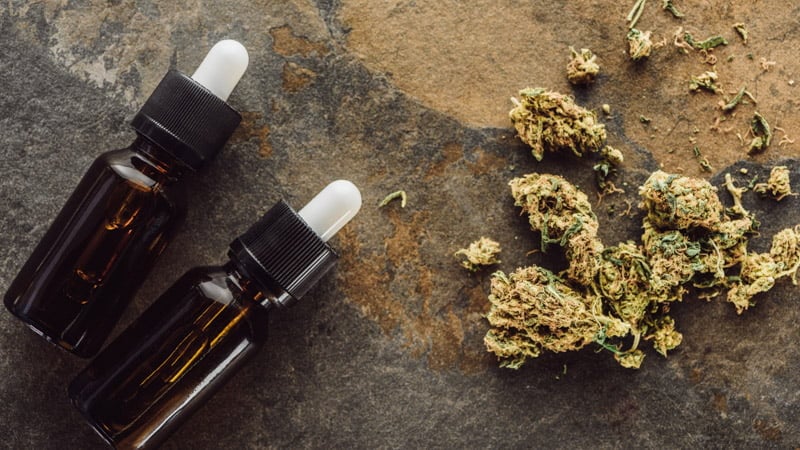What Are Terpenes? Cannabis Terpenes 101 — Finest Labs
Terpene is a word not many have heard before, but probably everyone is familiar with, in one way or another.
In essence, terpenes are the aromatic compounds that give plants their aroma.
In addition to plants, certain insects (such as the maize weevil) also produce them to either attract mates or fight off attackers.
If you’ve ever smelled a flower or enjoyed a long walk in the forest just to take in the fresh, aromatic air, then you enjoyed the boosting properties of terpenes first-hand.
So, what exactly are they, and why do people associate them with cannabis?
In this article, you’ll find everything you need to know about terpenes, including why they matter and how they work.
Which Plants Contain Terpenes?
Often, when they hear the words terpenes or terpenoids, people immediately think about cannabis. But that’s not the only plant with a high concentration of them — conifers, sweet-smelling flowers, and many other plants contain them.
The role of terpenes in plants is much more significant than appeasing humans. Just like with insects, plants use terpenes to attract pollinators or to repel certain predators. Some plants might even use them actively in the healing process or to fight off germs.
Keep in mind that plants can contain more than one terpene. Cannabis is a great example of this, as it is known to have over 100 terpenes. Depending on the variation, the terpenes present in the plant can even go up to 200.
As for terpenoids, they are not exactly the same as terpenes. Terpenoids are the oxidized version of the compound, which results when a plant dries, while terpenes are naturally found in live plants. Many terpenoids form as a byproduct of cannabis processing after the drying and crystallization process of the plant.
Types of Terpenes
Scientists have categorized terpenes according to their molecular formation.
In other words, each of these categories got its name from the number of terpene units required to form a molecule.
- Hemiterpenes (isoprenol, isoprene)
- Monoterpenes (geraniol, terpineol, limonene, myrcene, linalool, pinene)
- Sesquiterpenes (humulene, farnesene, farnesol)
- Diterpenes (cafestol, kahweol)
- Sesterterpenes (andrastin A, geranylfarnesol, leucosceptrine)
- Triterpenes (squalene)
- Sesquiterpenes (ferrugicadiol)
- Tetraterpenes (lycopene, beta-carotene)
- Polyterpenes (natural rubber)
Terpenes can also be separated by the presence, or absence, of a functional group (terpenes versus terpenoids).
When a terpene is pure and only contains carbon and hydrogen atoms, it’s considered a terpene. When it contains an additional functional group (such as a hydroxide group), it’s considered a terpenoid instead.
Both terpenes and terpenoids are common in nature and offer more or less the same benefits. The addition of a functional group may or may not change the ability for compounds to bind or interact with various receptors in the human body — and therefore may alter the therapeutic effects.
Which Terpenes Are Found In Cannabis?
Every strain of cannabis has a unique combination of terpenes, which gives them their distinctive aroma. Some cannabis smell skunky; others have more of a citrus or fruity scent.
You may be familiar with the crystal-like formations that appear on the cannabis plant. Those are the trichomes, and they contain resin glands that are responsible for producing terpenes and cannabinoids.
Terpenes act as supporting agents to the cannabinoids in terms of physiological effects. They seem to boost the impact of cannabinoids directly through the entourage effect (by enhancing absorption, slowing breakdown, or interacting with how they bind to receptor sites). However, they also offer their own set of benefits.
Even though cannabis has hundreds of different terpenes, some show up consistently across the various strains. The most common terpenes found in cannabis include myrcene, linalool, humulene, beta-caryophyllene, limonene, pinene, and terpinolene — but there are many others as well.
Related: List of terpenes found in cannabis.
List of Major Terpenes & Their Effects
With so many terpenes available, it’s hard to keep track of the smells, effects, and sources besides cannabis. Here’s a list of terpenes found in cannabis — some are in most strains while others rarely show up at all.
Betulinic Acid
Betulinic acid occurs naturally in the bark of many trees, but especially white birch. Its effects on mitochondria make it of special interest in the medical community. Many skin care products contain betulinic acid due to its pharmacological properties.
- Type: Pentacyclic Triterpenoid
- Sources: White birch bark, Indian plums, rosemary
- Effects: Cell protection, reduces swelling and pain
- Uses: Skincare creams
- Cannabis strains: Not commonly found in cannabis
Bisabolol
Bisabolol is also called levomenol and is an active part of chamomile, contributing to its relaxing effects. Its ability to boost skin health and enhance the absorption of other molecules, along with its pleasant scent, makes it a popular addition to skincare products.
- Type: Monocyclic Sesquiterpenoid
- Aroma: Floral, sweet
- Sources: Cannabis, german chamomile, candeia tree
- Effects: Relaxing; soothing, and therapeutic when used topically
- Uses: Cosmetics, skincare products, perfumes
- Cannabis strains: Harle-Tsu, ACDC
Borneol
This terpene could prove to be an effective messenger drug due to its effect on the blood-brain barrier. Its cooling fragrance may improve breathing and promote sleep. Soaps and detergents often contain borneol due to its refreshing scent and ability to kill germs.
- Type: Bicyclic Monoterpene
- Aroma: Woody, similar to camphor
- Sources: Cannabis, ginger, rosemary, sage, marjoram
- Effects: Stress relief, relaxing
- Uses: Insect repellant, soaps, detergents
- Cannabis strains: K13-Haze, Golden Haze
Cadinene
Cadinene is from Cade juniper (Juniperus oxycedrus L.), from where its isomers were first located. Not only is it in many plants, but a large number of termite species and some beetle species use it in their chemical communication systems.
- Type: Bicyclic Sesquiterpene
- Aroma: Fresh, woody
- Sources: Juniper, basil, chamomile, thyme
- Effects: Uplifting, energizing cleansing
- Uses: Household cleaners, perfumes
- Cannabis strains: Not commonly found in cannabis
Campesterol
Campesterol is a plant-derived steroid (phytosterol) and is the precursor to brassinosteroid (BR). These sterols seem to help balance cholesterol and play a role in heart health.
- Type: Triterpene
- Aroma: –
- Sources: Banana, coffee, cucumber, nuts
- Effects: Supplement heart health
- Uses: Nutritional supplements
- Cannabis strains: Not commonly found in cannabis
Camphene
From oil for torches to an ingredient for fumigants during plagues, camphene has served many purposes. We’ve since found other uses (too flammable to safely use for torches) like adding it to different products and foods. It’s also used in many topical analgesics.
- Type: Bicyclic Monoterpene
- Aroma: Earthy, woodsy, hint of pine
- Sources: Cannabis, nutmeg, basil, conifers, citronella
- Effects: Stress relief cooling sensation
- Uses: Mothballs, food flavoring, topical analgesics, cosmetics, insect repellant
- Cannabis strains: Banana Kush, OG Kush, ACDC
Camphor
If you have a cold, reach for camphor. Not only is it likely to give give you a boost of energy, but it could also help clear your nose. Camphor is great for topical use as it’s highly beneficial for the skin and readily absorbed.
- Type: Monoterpene
- Aroma: Musky, damp earth, fir
- Sources: Cannabis, camphor laurel trees, basil, mint, rosemary
- Effects: Uplifting, cooling, pain relief, reduces swelling, clears airways
- Uses: Added to decongestive and respiratory medications, skincare products
- Cannabis strains: Island Sweet Skunk, Train Wreck
Caryophyllene
Terpenes seem to have therapeutic potential due to their influence on different receptors. Caryophyllene, or beta-caryophyllene, is one of the few to go the extra mile and activate the CB2 receptor in the endocannabinoid system.
- Type: Bicyclic sesquiterpene
- Aroma: Peppery, spicy
- Sources: Cannabis, black pepper, cinnamon, basil, clove
- Effects: Activates CB2 receptor, stress relief
- Uses: Calming, pain relief
- Cannabis strains: Girl Scout Cookies, Original Glue Purple Punch
Carvone
Carvone is the dominant terpene in caraway seeds. This terpene’s minty and unique aroma makes it popular in air fresheners and lotions. It aids in digestion and may reduce pain.
- Type: Monoterpene
- Aroma: Sweet, minty
- Sources: Caraway, dill, spearmint
- Effects: Aids digestion, relieves pain
- Uses: Several medical applications, fragrance, food flavoring
- Cannabis strains: Not commonly found in cannabis
Citral (AKA Lemonal)
Citral will find its way into your home in one way or another. Its sweet, strong lemon scent makes it a common ingredient in food and household products. The refreshing terpene kills germs, relieves pain, and may help you sleep better.
- Type: Acyclic monoterpene
- Aroma: Sweet, fruity, lemony
- Sources: Cannabis, lemon balm, lemongrass, lime, lemon
- Effects: Improves sleep, pain relief, digestive aid
- Uses: Perfumes, insecticides, household products, food flavoring
- Cannabis strains: Agent Orange, Lemon Skunk, Chernobyl
Chamazulene
Chamazulene is actually formed when matricin breaks down during the distillation process. It gives German chamomile its blue color. It’s extensively researched because of its effects on cells.
- Type: Bicyclic sesquiterpene
- Aroma: Fruity, woody, minty
- Sources: Chamomile, clove, lavender
- Effects: Reduces swelling, encourages cell health
- Uses: Skincare products
- Cannabis strains: Not commonly found in cannabis
Delta-3-Carene
Also called carene, this terpene has an incredible drying effect on bodily fluids. If you experience a dry mouth with cannabis, it’s likely due to a high amount of this terpene. It makes up for this by offering relief from some pain due to certain hard-to-treat issues.
- Type: Bicyclic monoterpene
- Aroma: Citrus with cypress undertones
- Sources: Cannabis, lemon, rosemary, pine
- Effects: Drying effects, supplement for bone health
- Uses: Cosmetics, perfumes, food flavoring
- Cannabis strains: Super Silver Haze, AK47, Jack Herer
Eucalyptol (AKA Cineol)
Eucalyptol makes up almost 90% of eucalyptus. Its minty flavor and cooling effects make this terpene common in oral hygiene products. It’s suggested to be able to open airways and help with stuffy noses and relieve minor muscle aches and pains. If you have a minty cannabis strain, it likely has some eucalyptol in it.
- Type: Monocyclic monoterpene
- Aroma: Minty, cooling
- Sources: Cannabis, eucalyptus, tea tree, bay leaf, sage
- Effects: Relieves pain, reduces congestion
- Uses: Food flavoring, mouth wash, medications, topical ointments
- Cannabis strains: Girl Scout Cookies, Super Silver Haze, Dutch Treat
Farnesol
Farnesol acts as a pheromone for some insects but keeps others away. Because of its fragrance, its often used to boost the floral scent in perfumes. It might relieve some pain and swelling and could help protect healthy cells.
- Type: Acyclic sesquiterpene
- Aroma: Light, sweet, floral
- Sources: Plum, blueberries, apricots
- Effects: Reduces swelling, relieves pain
- Uses: Deodorants, cosmetics
- Cannabis strains: Not commonly found in cannabis
Fenchol
Fenchol is a good addition to many perfumes and soaps due to its unique and refreshing scent. It may boost soap’s ability to kill germs and fungus and has some antioxidant properties.
- Type: Monoterpene
- Aroma: Citrusy, woody, like camphor
- Sources: Cannabis, basil, aster flower, lime, wild celery
- Effects: Uplifting, invigorating
- Uses: Perfumes
- Cannabis strains: Banana Kush, OG Kush
Geraniol
Geraniol gets its name from geraniums and makes up much of its fragrance. You’ll find this scent in candles, perfumes, foods, and even insect repellants. Geraniol may help lift your mood after a rough day and even promote brain health.
- Type: Monoterpene
- Aroma: Sweet with rose and other floral notes, citrusy
- Sources: Cannabis, rose, geranium, citronella, coriander
- Effects: Boosts mood, promotes brain health
- Uses: Food flavoring, perfumes, insect repellants, candles, soaps
- Cannabis strains: Strawberry Diesel, Black Cherry Soda, Harlequin
Geranyl-Acetate
We love this terpene’s aroma with its rosy/floral/fruity mix. Insects, however, tend to stay away — geranyl-acetate makes a good insect repellant. Its most important feature might lie in its effects on cells.
- Type: Monoterpene
- Aroma: Fruity, floral
- Sources: Cannabis, carrot, coriander, sassafrass
- Effects: Pain relief, digestive aid
- Uses: Personal care products, cleaning products, food flavoring
- Cannabis strains: Zkittlez, Hawaiian Haze, Sour Space Candy
Guaiol
Guaiol is difficult to use because of its low boiling point but its health benefits, coupled with its fresh, woody, rose scent, are worth the effort. Historically, it was used to treat syphilis, but we do not recommend using it for this; however, it may be helpful if you have a cough.
- Type: Sesquiterpene
- Aroma: Pine with wood and rose
- Sources: Cannabis, guiacum plant, Cypress, nutmeg, apples
- Effects: Reduces swelling and pain, relief for coughs
- Uses: Insect repellants, soaps, perfumes
- Cannabis strains: Cinex, Fruit Loops, Pennywise
Humulene
Humulene is an isomer of caryophyllene and used to be called alpha-caryophyllene. These two terpenes are similar, but humulene doesn’t activate the CB2 receptors. Hops get much of their scent from humulene (this terpene makes up to 40% of its profile).
- Type: Monocyclic sesquiterpene
- Aroma: Herbal, woody, spicy, earthy
- Sources: Cannabis, hops, sage, ginseng
- Effects: Appetite reduction, relieves swelling
- Uses: Beer
- Cannabis strains: Candyland, Headband, Death Star
Isopulegol
This terpene is often used as a starting point in the manufacturing of menthol. Its cooling effects make it popular for skincare products, but it also might help increase the permeation of some topical drugs.
- Type: Monoterpene
- Aroma: Minty, fresh, cooling
- Sources: Cannabis, mint, eucalyptus, parsley, lemongrass
- Effects: Calming, uplifting
- Uses: Personal care products, soaps
- Cannabis strains: Kosher Tangie, Headband, OG Kush
Lavandulol
Lavandulol is an insect pheromone and a main component of lavender oil, an essential oil that has many therapeutic uses. Its often added to perfumes because of its light, floral fragrance but also may improve respiratory and skin health.
- Type: Monoterpene
- Aroma: Light herbal, floral, lemon undertones
- Sources: Lavender,
- Effects: Relieves stress, improves respiratory and skin health
- Uses: Perfumes, food flavoring
- Cannabis strains: Not commonly found in cannabis
Limonene
Limonene’s citrus, fresh scent and ability to kill germs make it great for cleaners. It’s also a good way to boost your mood and might even improve brain health.
- Type: Monocyclic monoterpene
- Aroma: Lemony, fruity
- Sources: Cannabis, citrus rinds, juniper
- Effects: Energizing, uplifting
- Uses: Food flavoring, cleaners, household products
- Cannabis strains: Strawberry Banana, Do-Si-do, Wedding Cake
Linalool
Linalool seems to influence several neurotransmitters, meaning it could have an impact on brain health. Until we know more about its benefits, we’ll continue to enjoy its calming and gentle aroma.
- Type: Acyclic monoterpenoid
- Aroma: Floral, woody
- Sources: Cannabis, lavender, basil, coriander
- Effects: Calming, reduces stress, promotes sleep
- Uses: Perfumes, household products, personal care products
- Cannabis strains: Zkittlez, Scooby Snacks, Do-Si-Do
Lutein
If you were ever told to eat your spinach because it’s good for your eyes, you should’ve listened. Dark leafy vegetables are very high in lutein, a carotenoid known to promote eye health. It may also help reduce swelling.
- Type: Tetraterpenoid
- Aroma: Faint, unpleasant, similar to old plant matter
- Sources: Spinach, kale, parsley, pistachios
- Effects: Reduces swelling, promotes eye health
- Uses: Food coloring, nutritional supplement
- Cannabis strains: Not commonly found in cannabis
Lycopene
Lycopene is a carotenoid related to beta-carotene and gives fruits and vegetables their bright red color. It might help protect cells from oxidative damage.
- Type: Tetraterpenoid
- Aroma: –
- Sources: Red carrots, watermelon, grapefruit, papaya
- Effects: Reduces inflammation, immune support
- Uses: Nutritional supplement
- Cannabis strains: Not commonly found in cannabis
Menthol
Menthol makes up to 80% of peppermint oil and is used in everything from cigarettes to cough drops. It activates the TRPM receptor, a thermosensitive cation channel, causing its cooling sensation.
- Type: Monocyclic monoterpene
- Aroma: Cooling, minty, fresh
- Sources: Cannabis, peppermint, juniper, sage, tarragon
- Effects: Energizing, pain relief
- Uses: Oral hygiene and medicinal products, gum
- Cannabis strains: Green Monster, Wonder Woman OG, Space Needle
Myrcene
Myrcene is the most abundant terpene in cannabis and tends to be very sleep-inducing. Its fragrance is pleasant in smaller amounts but can become pungent. It can easily cross the blood-brain barrier, giving cannabinoids easier access. It’s suggested to help reduce some pain and can ease symptoms of diarrhea.
- Type: Acyclic monoterpene
- Aroma: Musky, spicy, earthy
- Sources: Cannabis, hops, thyme, mango, lemongrass
- Effects: Calming
- Uses: Beer, food flavoring, perfumes
- Cannabis strains: Common in most strains; Granddaddy Purple, Tangie, Blue Dream
Myristicin
Myristicin is one of the few terpenes that’s a hallucinogenic, though not a pleasant one. Nutmeg contains high amounts of it, giving people easy access to its potent but often dangerous effects.
- Type: Monoterpene
- Aroma: Spicy, warm, woody
- Sources: Nutmeg, clove, anise
- Effects: Hallucinogenic
- Uses: Insecticides
- Cannabis strains: Not commonly found in cannabis
Nerolidol
Nerolidol is found in many aromatic plants and in citrus peels. It has relaxing qualities and enhances skin penetration, making it a common addition to skincare products and cosmetics.
- Type: Acyclic sesquiterpene
- Aroma: Floral, sweet, hints of apple and rose
- Sources: Cannabis, ginger, jasmine, tea tree, lavender
- Effects: Sleep aid, relaxing
- Uses: Cosmetics, food flavoring, detergents
- Cannabis strains: Island Sweet Skunk, Skywalker OG, Jack Herer
Ocimene
Ocimene may help induce coughing, making it helpful if you need to clear your chest but annoying if you don’t. It has uplifting properties and might inhibit key enzymes in the body, giving it great therapeutic potential.
- Type: Monoterpene
- Aroma: Earthy, woody, sweet, citrusy
- Sources: Cannabis, orchid, hops, basil, bergamot, black pepper
- Effects: Clears airways, induces coughing
- Uses: Perfume, antiperspirant, cleaners
- Cannabis strains: Dutch Treat, Amnesia, Clementine
Oleanolic Acid
This terpene usually shows up as a free acid in food and plants. It may be good for the skin and might help promote hair growth. It shows potential in treating many ongoing health problems, though more research is needed.
- Type: Pentacyclic triterpene
- Aroma: –
- Sources: Olives, thyme, clove
- Effects: Skin health, supports immune system and healthy insulin levels
- Uses: Skincare products, nutritional supplement
- Cannabis strains: Not commonly found in cannabis
Parthenolide
Parthenolide is named after feverfew but is found mostly in fruits and flowers. It mayn help ease joint pain and is a good digestive aid.
- Type: Sesquiterpene
- Aroma: Bitter, citrus
- Sources: Feverfew, flowers, fruits
- Effects: Pain relief, especially headaches, reduces swelling, digestive aid
- Uses: Nutritional supplement
- Cannabis strains: Not commonly found in cannabis
P-Cymene
P-cymene shows great potential for the treatment of a variety of things, including reducing pain and swelling. It might help with drug delivery, but more studies are needed to determine its safety.
- Type: Monocyclic monoterpene
- Aroma: Woodsy, citrusy, earthy
- Sources: Cannabis, cumin, oregano, anise
- Effects: Calming, pain relief
- Uses: Food flavoring, insecticides, fungicides
- Cannabis strains: Mango Haze, King Mamba
Phellandrene
Here’s another terpene that is easily absorbed. Perfumes and cosmetics often have phellandrene as a fragrance. It can increase energy levels and might reduce some types of pain.
- Type: Monoterpene
- Aroma: Woody, minty, hints of citrus
- Sources: Cannabis, cinnamon, dill, black pepper, pine
- Effects: Easily absorbed, pain reduction, energizing
- Uses: Cosmetics, food flavoring
- Cannabis strains: Train Wreck, Ace of Spades, Jack Herer, SAGE
Phytol
Green tea, especially matcha and sencha, contains high amounts of phytol. Chlorophyll degradation (as well as the digestion of plant material) releases high amounts of this terpene. It’s a potentially harmful vape ingredient due to the possibility of lung damage.
- Type: Acyclic diterpene
- Aroma: Unpleasant, grassy
- Sources: Cannabis, green tea, all green plants
- Effects: Relaxing, calming
- Uses: Household products, used in synthetic vitamin E and K1
- Cannabis strains: Cheese, Sour Diesel
Pinene (Alpha & Beta)
While most terpenes seem to benefit our health, some terpenes seem to hold an almost unreal amount of potential — pinene is one of those terpenes. Right now, it’s used for its fresh scent and relaxing qualities and in medications that help open the airway.
- Type: Bicyclic monoterpene
- Aroma: Pine, fresh
- Sources: Cannabis, pine needles, basil, rosemary, orange peel
- Effects: Opens airways, calming, pain relief
- Uses: Food flavoring, household products, detergents
- Cannabis strains: Snoop’s Dream, Big Mass, Critical Smooth
Sabinene
Sabinene gives black pepper some of its spiciness. It adds flavor to foods but is also soothing to the skin and aids digestion.
- Type: Bicyclic monoterpene
- Aroma: Citrus, spicy, hint of wood and pine
- Sources: Cannabis, carrot seed oil, black pepper, clove, tea tree
- Effects: Soothes skin, aids digestion, reduces swelling
- Uses: Food flavoring, fragrances
- Cannabis strains: Super Silver Haze, other Haze strains
Salvinorin A
Salvinorin A is another terpene with hallucinogenic traits. It’s often used recreationally but is being studied for its activation of certain opioid receptors. There’s a possibility it could be used as a pain reliever or for helping improve mental health.
- Type: Trans-neoclerodane diterpene
- Aroma: Sage and lavender-like, similar to incense
- Sources: Salvia divinorum
- Effects: Hallucinogenic, reduces pain
- Uses: Pain reliever
- Cannabis strains: Not commonly found in cannabis
Steviol
Steviol is a common sweetener and replaces sugar in many foods. It might help balance metabolism and keeps vitamin C from degrading.
- Type: Tetracyclic diterpene
- Aroma: –
- Sources: Stevia rebaudiana
- Effects: Delays degradation of vitamin C, antioxidant properties
- Uses: Food additive (sweetener)
- Cannabis strains: Not commonly found in cannabis
Stigmasterol
Sterols are used in many pharmaceutical products. Some stigmasterol is used to produce progesterone and corticoids. It also might help with cholesterol levels.
- Type: Triterpene
- Aroma: –
- Sources: Soybean, calabar bean, rapeseed, unpasteurized milk
- Effects: Precursor to vitamin D
- Uses: Food additive, used in commercial synthesis of cortisone
- Cannabis strains: Not commonly found in cannabis
Terpineol
This terpene makes an excellent sleep aid to the point where it might immobilize you. If you light a pine-scented candle for the holidays, it likely has terpineol in it. It may offer immune support, among other health benefits.
- Type: Monoterpene
- Aroma: Peppery, woody, herbaceous
- Sources: Cannabis, pine oil, bitter orange tree, lilac tree, clary sage
- Effects: Possible cause of “couch lock,” boosts immune system
- Uses: Widely used in food; soap, perfumes, lotions
- Cannabis strains: Jack Herer, Girl Scout Cookie, White Widow
Terpinolene
Terpinolene has a complex, fresh aroma and can kill some germs, making it prevalent in many soaps and cleaners. It is very calming and may promote sleep, especially when used with linalool.
- Type: Monoterpene
- Aroma: Fresh, herbal, piney, floral, citrus undertones
- Sources: Cannabis, lilac, citrus, nutmeg, apples, juniper
- Effects: Sleep aid, promotes heart health
- Uses: Cleaners, soaps, perfumes
- Cannabis strains: Dutch Treat, XJ13, Golden Pineapple
Thymol
Thymol gives thyme its strong scent and plays a huge role in its nutritional value. It may promote overall health, reduce swelling, among other benefits. It’s used often in insecticides, mouth wash, food, and other products.
- Type: Monoterpene
- Aroma: Pungent, woody, spicy
- Sources: Thyme,
- Effects: Reduces swelling, promotes heart and respiratory health
- Uses: Pharmaceutical, cosmetic, food additive
- Cannabis strains: Not commonly found in cannabis
Valencene
Valencene gets its name from Valencia oranges but converts to nootkatone, the primary constituent of grapefruit’s aroma. It has properties that may help with swelling, allergies, and skin health.
- Type: Sesquiterpene
- Aroma: Citrusy, sweet, herbal, woody
- Sources: Cannabis, valencia oranges, tangerines, mangoes
- Effects: Opens airways, reduces swelling, boosts skin health
- Uses: Insecticides, personal care products, cosmetics
- Cannabis strains: Tangie, Agent Orange
Terpenes: How Do They Work?
Essential oils used to be the only way we could purposely use somewhat-isolated terpenes. Now they’re sold individually or as blends, and we can implement them in various ways. Similar to essential oils, we can use them topically, orally, or by inhaling.
You can’t just swallow down terpenes or rub them on your skin, though — you need to use terpenes safely.
How do these small molecules make such an impact? It’s an odd concept and has many people convinced it’s snake oil (fake medicine).
There is science behind it, however. Here’s a glimpse of how terpenes affect our bodies [1].
When we use terpenes, we involve the olfactory system, the digestive system, or the gastrointestinal system, though often more than one is impacted. For example, if you apply terpenes topically, you’ll still smell them.
When used topically or orally, terpenes can activate gamma-aminobutyric acid (GABA) receptors and transient receptor potential (TRP) channels; inhalation activates olfactory receptors. Fun fact: there are olfactory receptors in the gut, intestine, and skin, but, thankfully these do not sense odors. Can you imagine? Terpenes activate these, too.
These olfactory receptors do cause chemical reactions, however. They stimulate the secretion of hormones and enzymes and adjust blood pressure, to name a few.
Olfactory system activation ultimately sends signals to various parts of the brain, causing the brain to take action, depending on what signals it receives.
Of course, the process is far more complex than this, and we don’t know how deep the implications go.
Terpenes: What Does the Research Show?
The research surrounding terpenes and their therapeutic benefits are only in the beginning phase. It could be a while before we have any conclusive evidence. However, many studies suggest they have great potential and, at the very least, deserve more research.
While each terpene has a unique effect, many tend to have similar effects. Here are a few ways many terpenes seem to affect our bodies. For a more in-depth look at the research, check out our individual terpene pages.
Again, not all terpenes demonstrate these capabilities, and there’s not enough research to know the exact impact terpenes have.
Antimicrobial Studies
Many terpenes have antibacterial, antiviral, antifungal, antimalarial, and antiparasitic traits [2, 3,4]. Monoterpenes, in particular, show great potential for their antiviral properties.
Cytoprotective Studies
Some terpenes seem to have cytoprotective capabilities, especially when dealing with cancer cells [1,5,6]. There are different ways they do this; some suppress the growth of malignant cells or help the body get rid of damaged cells. Others affect cell life and proliferation or inhibit oxidative stress.
Mood Supportive & Anxiolytic Studies
Many people use essential oils for focus and overall improved cognitive abilities. Some terpenes seem to help fight mental fatigue and are uplifting, while others induce sleep and are calming [7,8].
A terpene’s effect on mood might go deeper than a superficial “feel good” moment, though. Some, in particular, might help with depression and anxiety, mainly when used alongside cannabinoids [9].
Inflammation Studies
Quite a few terpenes might reduce inflammation, including neuro and respiratory, which can help with certain pain and discomfort [5,10].
Analgesic Studies
Some studies show terpenes can reduce pain and likely play a minor role in cannabis’ potent effects [6,11].
Neuroprotective Studies
Terpenes might protect the brain from harmful elements like oxidative stress, inflammation, and others [9]. Monoterpenoids and sesquiterpenoids show a high affinity for crossing the blood-brain barrier [12].
Entourage Effect
Some studies show enhanced benefits when cannabinoids and terpenes are used together. This is called “the entourage effect” and suggests that their combination can provide more significant results [8].
Terpenes, in general, are safe, have very low toxicity, and are well-tolerated by most people, increasing their potential for future use for many treatments [5].
Cannabis Terpenes vs. Botanical Terpenes
The term “cannabis terpenes” gets thrown around a lot, but what’s the difference between those and botanical terpenes?
Cannabis-derived terpenes come from cannabis, while botanical terpenes come from all other plants. While it sounds like terpenes from cannabis should be special, they aren’t — not when the extraction process is done correctly. Why?
A properly extracted terpene means there’s nothing but terpene in the final product. The source doesn’t change the terpene’s structure, function, or anything else. Linalool is the same whether it’s from cannabis or lavender. There’s no “entourage effect” because of the cannabinoids — there shouldn’t be any cannabinoids left over.
Why the fuss over them? Clever marketing.
If you want to benefit from cannabinoids and terpenes, you need to buy a product specifically for that. Figure out what you’re hoping to gain, and go from there.
Cannabis Extracts & Terpenes
Not all cannabis products contain terpenes, just like not all terpenes contain cannabinoids. However, many of the products derived from cannabis and hemp contain terpenes, as they occur naturally in the plant.
CBD oil is an excellent example of the diversity available. If you want a CBD oil that has terpenes, you should look for full-spectrum products.
Types of cannabis extracts and their terpene concentrations:
- Full-spectrum products refer to extracts that maintain all the plant’s active ingredients, including terpenes and THC.
- Broad-spectrum products have all active ingredients minus THC.
- Isolates contain only one active ingredient, such as pure CBD or pure THC (no terpenes).
Key Takeaways: What Are Terpenes?
Terpenes are everywhere in nature — they are the part that gives plants their specific aromas. Although most people only associate them with cannabis, lavender and hops are just a few of the many other plants rich in terpenes. Almost every plant surrounding us has them, and they are essential to our daily lives.
Their bioactive properties help us in many ways, vastly increasing our quality of life. Terpenes are a great supplement to traditional medicine.
Now that you know what terpenes are and what they’re used for, the hardest part will be deciding how to implement them into your life.
References Used
- Koyama, S., & Heinbockel, T. (2020). The effects of essential oils and terpenes in relation to their routes of intake and application. International journal of molecular sciences, 21(5), 1558.
- Cox-Georgian, D., Ramadoss, N., Dona, C., & Basu, C. (2019). Therapeutic and medicinal uses of terpenes. In Medicinal Plants (pp. 333-359). Springer, Cham.
- Gallucci, N., Casero, C., Oliva, M., Zygadlo, J., & Demo, M. (2006). Interaction between terpenes and penicillin on bacterial strains resistant to beta-lactam antibiotics. Mol. Med. Chem, 10(1), 30-32.
- Osorio, E., Arango, G., Robledo, S., Munoz, D., Jaramillo, L., & Velez, I. (2007). Antileishmanial and cytotoxic activity of synthetic aromatic monoterpens. ACTA FARMACEUTICA BONAERENSE, 25(3), 405.
- Nuutinen, T. (2018). Medicinal properties of terpenes found in Cannabis sativa and Humulus lupulus. European journal of medicinal chemistry, 157, 198-228.
- Tomko, A. M., Whynot, E. G., Ellis, L. D., & Dupré, D. J. (2020). Anti-cancer potential of cannabinoids, terpenes, and flavonoids present in cannabis. Cancers, 12(7), 1985.
- Wang, Z. J., & Heinbockel, T. (2018). Essential oils and their constituents targeting the gabaergic system and sodium channels as treatment of neurological diseases. Molecules, 23(5), 1061.
- Bahramsoltani, R., Farzaei, M. H., Farahani, M. S., & Rahimi, R. (2015). Phytochemical constituents as future antidepressants: a comprehensive review. Reviews in the Neurosciences, 26(6), 699-719.
- Ferber, S. G., Namdar, D., Hen-Shoval, D., Eger, G., Koltai, H., Shoval, G., … & Weller, A. (2020). The “entourage effect”: terpenes coupled with cannabinoids for the treatment of mood disorders and anxiety disorders. Current neuropharmacology, 18(2), 87-96.
- Kim, T., Song, B., Cho, K. S., & Lee, I. S. (2020). Therapeutic potential of volatile terpenes and terpenoids from forests for inflammatory diseases. International journal of molecular sciences, 21(6), 2187.
- Hanuš, L. O., & Hod, Y. (2020). Terpenes/Terpenoids in Cannabis: Are They Important?. Medical Cannabis and Cannabinoids, 3(1), 25-60.
- Cutillas, A. B., Carrasco, A., Martinez-Gutierrez, R., Tomas, V., & Tudela, J. (2018). Rosmarinus officinalis L. essential oils from Spain: Composition, antioxidant capacity, lipoxygenase and acetylcholinesterase inhibitory capacities, and antimicrobial activities. Plant Biosystems-An International Journal Dealing with all Aspects of Plant Biology, 152(6), 1282-1292.







